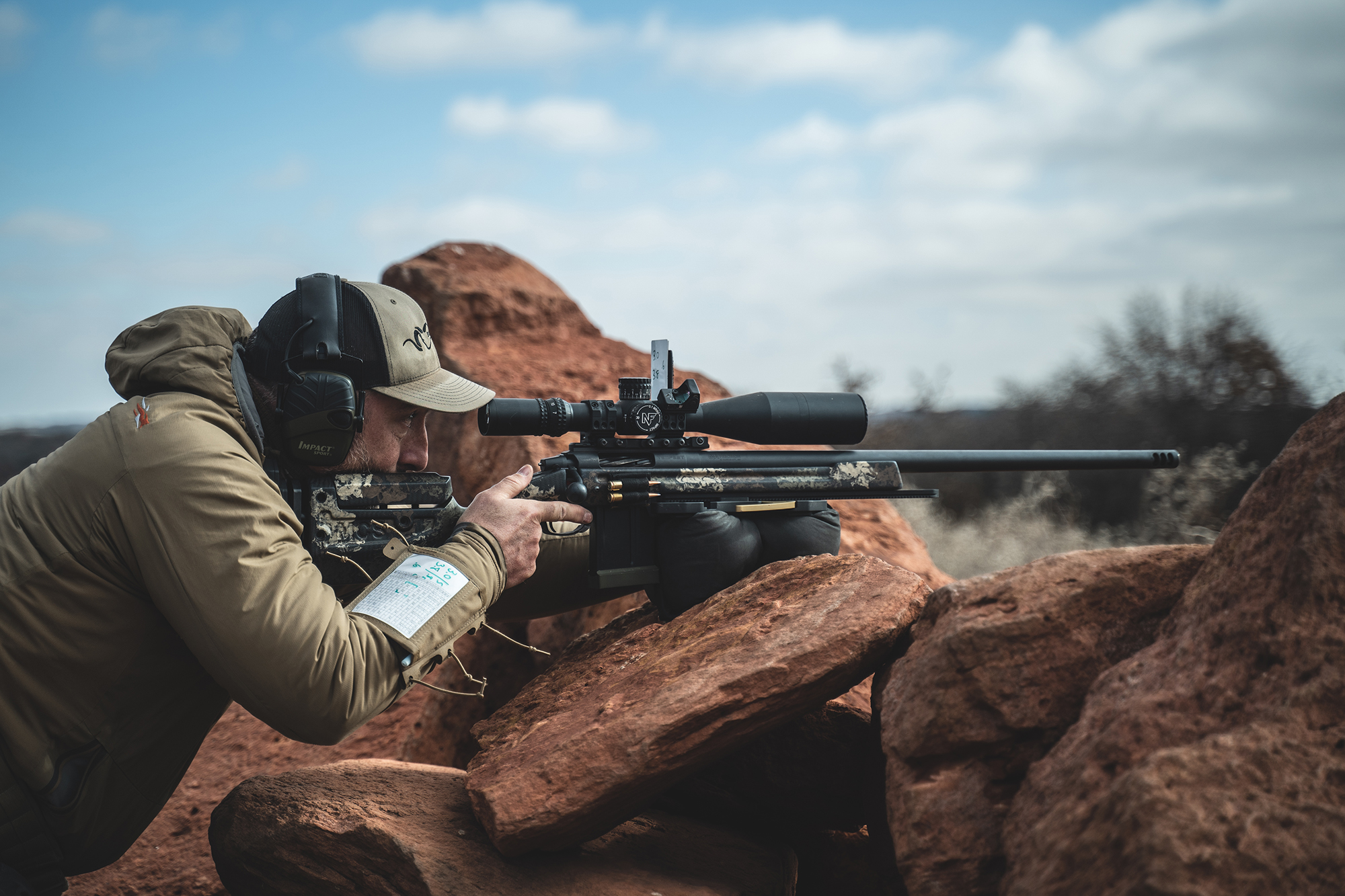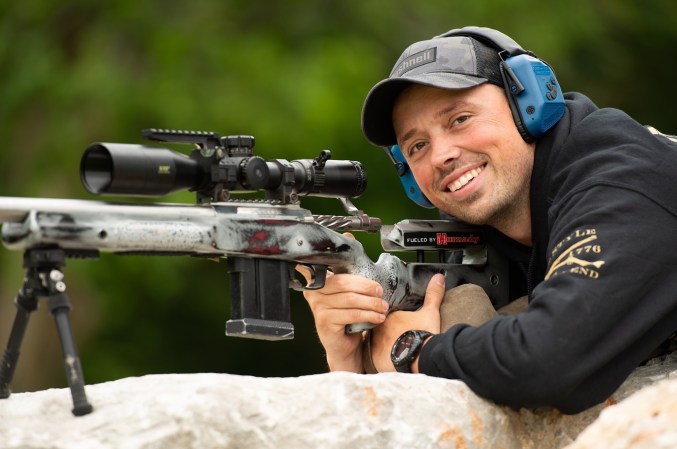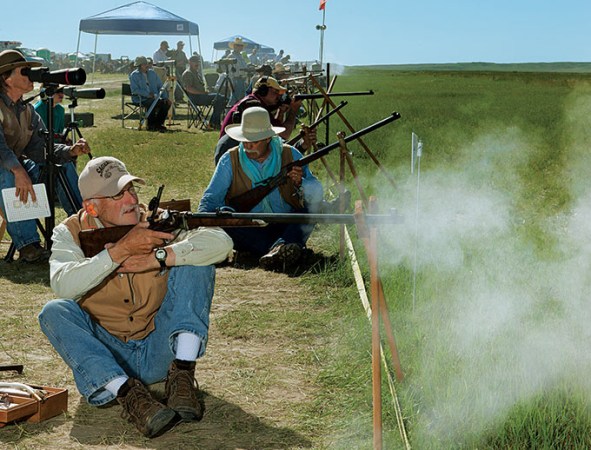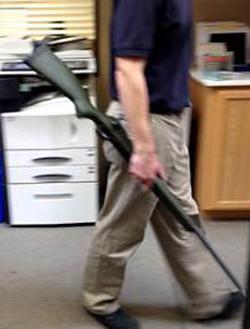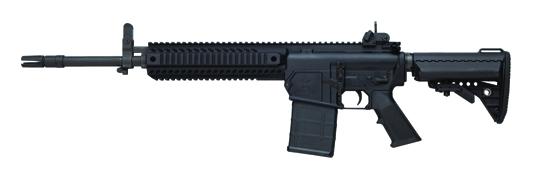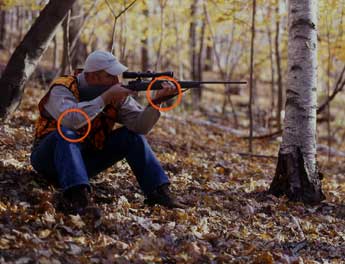We may earn revenue from the products available on this page and participate in affiliate programs. Learn More ›

I might have known that my road to the PRS Finale was going to be rough when the day before I was supposed to leave on the two-and-a-half week, 3,000-mile road trip, I tore the handle off the inside of the driver’s side door of my truck.
I’ll admit, I was a little angry when it happened. I mean before it happened—which might explain why it happened.
I was at the range, ready to fire-form 120 rounds of brass that I needed to reload for the match, when I realized I had left my firing pin at my workshop. You’re supposed to make boneheaded moves like that only once—kind of like forgetting to put the drain plug in your first boat before launching it at the ramp.
But I’d be lying if I told you I hadn’t pulled this stunt before.
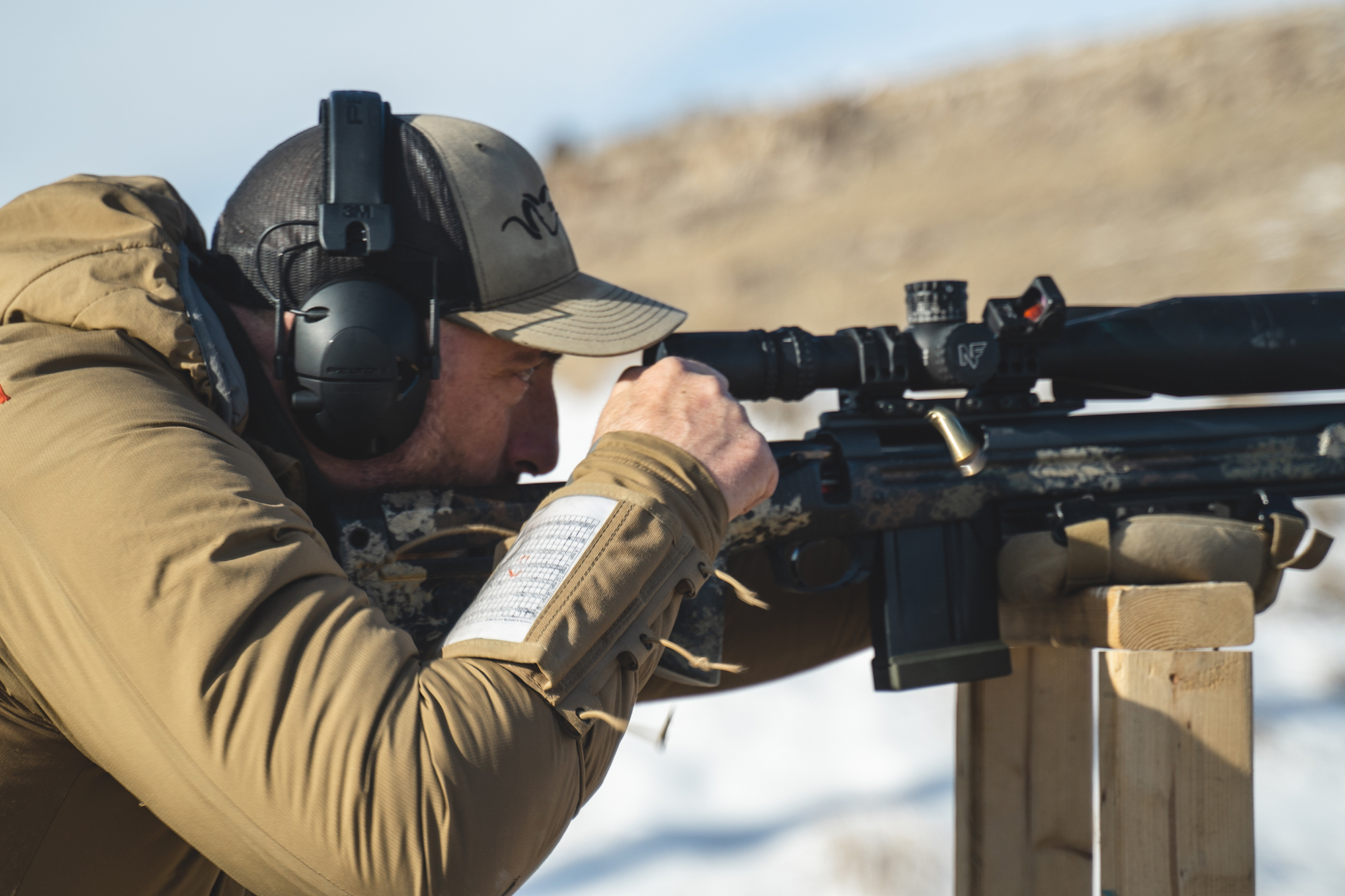
In case you’re wondering why my firing pin was not secured to the bolt of my GA Precision competition rifle, that’s simple. I had been testing my resized brass to make sure I had just the right amount of shoulder bump on my cases, and to do that you need to be able to feel how easily the brass chambers in your rifle. Any binding or resistance on the bolt close is a bad deal for PRS type shooting. And you can’t get a feel for that with the firing pin in the bolt.
Once I realized that my firing pin was AWOL, I had to pack up all my gear—including the steel I had just set out—and make the hour-long journey from the range to my workshop and back.
So I might have applied just a tad more torque on my door handle than called for as I went to collect my targets.
PRS Finale Prep
I didn’t have an hour to spare, was part of the problem. In fact, I was already seriously behind schedule. I was supposed to be wheels-up the next morning, leaving Bozeman for Burlington, Colorado, to hunt deer with one of my best buddies before continuing on to shoot the 2020 Precision Rifle Series Finale in Ninnekah, Oklahoma.
I tallied up the tasks in front of me—shoot up my 120 practice loads, anneal and prep the brass, then load up 300 meticulously constructed rounds for the two-day match where I’d be going head-to-head with the best shooters in the country. It was going to be a long night.
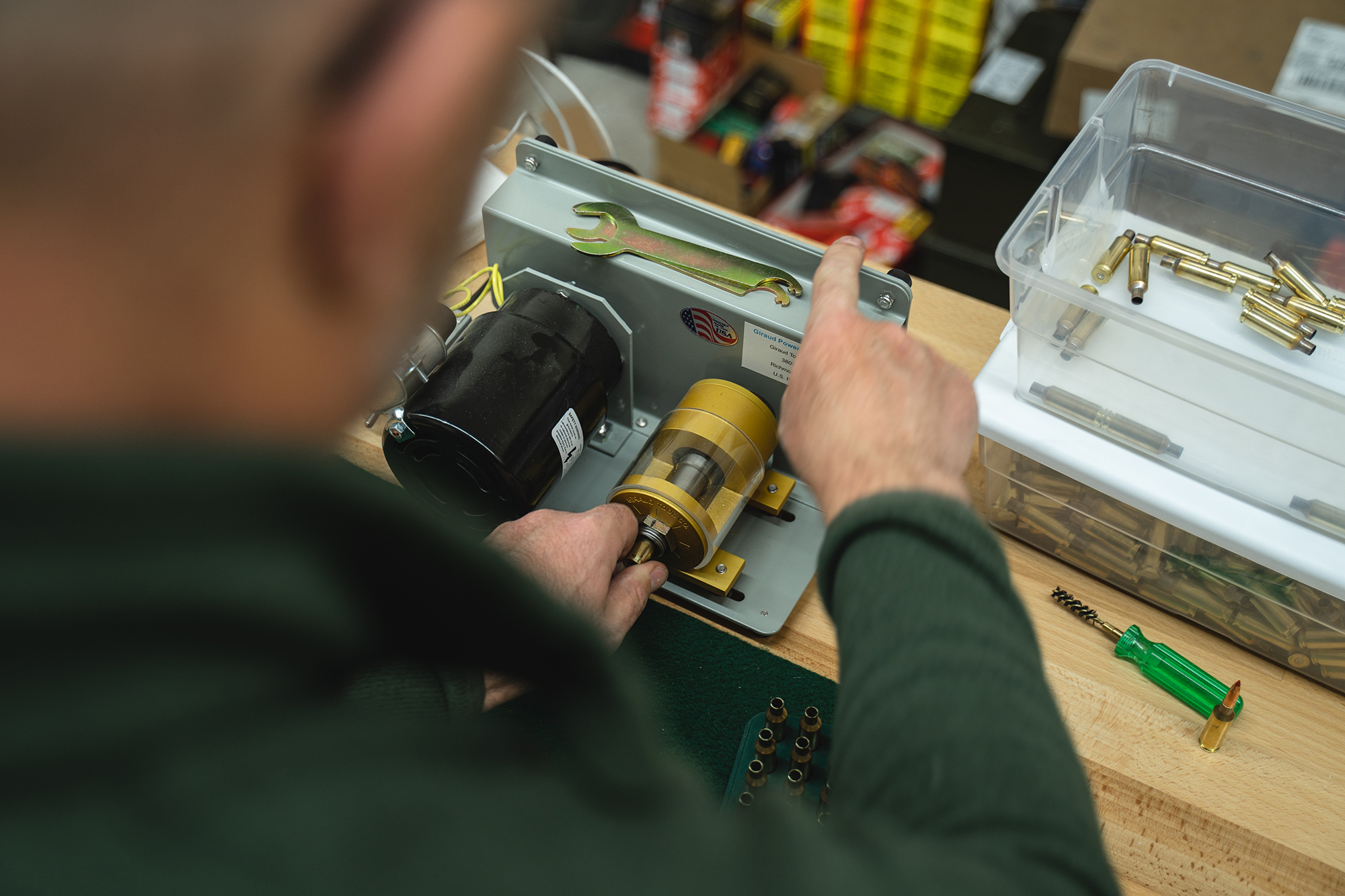
There are plenty of difficult matches out there, but for those who compete in practical precision rifle disciplines like the PRS, NRL and similar formats, there are a handful that exemplify the pinnacle of the sport.
And right at the top of the heap is the PRS Finale, which is like the PGA Masters for PRS shooters.
Practical precision rifle matches can take a variety of forms. Essentially, any field match that requires engaging steel targets at long ranges under a time constraint falls under this umbrella. Sometimes you have to find and range the targets while on the clock. Often you have to switch shooting positions once or more during a stage. And many of the targets will have to be shot from positions other than prone. And under most circumstances you’ll need to dial elevation corrections into your scope or use holdover reference marks in the reticle while shooting a stage, which can last anywhere from 90 seconds to 5 minutes, depending on the specific type of match. Add this together, mix in crappy weather and shifting gusty winds and you end up with some sporty shooting. PRS is sort of a drag race event in the world of tactical field matches. While the distances to the targets are known and the targets are generally easy to see, you are required to do a lot of non-prone shooting off barricades and obstacles under fast time constraints.
And even though pure PRS-type shooting isn’t my strong suit, I wanted to see how I stacked up against the elite group of shooters that was gathering in Oklahoma in a couple weeks.
At 5 am I seated the last bullet in its case, headed home and grabbed an hour and a half of sleep before hitting the interstate for the first leg of the journey. At nearly every gas station stop along the way I reached for the non-existent handle on my door and cursed before rolling down the window to exit the vehicle. It was karma-appointed anger management therapy.
PRS Rifle Tune-Up
Despite the mad dash to get my gear sorted before leaving, I was in pretty good shape when I rolled into Ninnekah a couple days before the match.
Pretty much every precision rifle shooter can relate to the last-minute scramble I experienced, but I had a couple other factors that added to the crush.
One is that I wanted to tune my gear for this match. As I said, this type of PRS shooting isn’t a focus of mine. I shoot mostly tactical team matches, which have longer stage times, but require you to find and range targets on the clock while communicating with a partner.
The rifle I shot last year—a GA Precision 6mm GAP GT—was built with those team matches in mind. My three-lug action ran off 10-round AW mags, and I worked up a load that shot Hornady 110-grain A-Tips at 2875 fps, which matched my partner’s velocities so we were running the same dope.
I knew that a number of the stages at the PRS Finale were going to require more than 10-rounds, and rather than try to reload on the clock—costing precious seconds in an already tough match—I opted to swap magazines, going from AW mags to AICS mags. That might not sound like a big deal, but it was. AWs are double stack magazines—they are nice and compact and run great from 3-lug actions like the Tempest on my GA Precision. But since the bottoms and sides are formed from a single piece of steel, you can’t add any type of extension. At most, AW’s will run 10 rounds and that’s it.
AICS mags, on the other hand are longer and feed from the center. And you can replace the base of them to accommodate 12 or more rounds.
Since I’d need a new stock to run the new magazines, I ordered a Manners PRS-TCS, which is a state-of-the-art stock for PRS type competition. It is fully tunable with weights so you can get perfect balance, and the distance from the bottom of the fore-end to the top of the scope is shorter than on a typical stock. This has two advantages. One the muzzle will flip up less under recoil, as the bore of the rifle is more in line with the shooter’s shoulder, and two, it is easier to maneuver the rifle in and out of confined shooting positions, like ports and cutouts, which are a mainstay of PRS competitions.
Better recoil management—which leads to an improved ability to spot hits and misses—is also why I opted to change my load before the match. I switched powders from Varget to H4350 and dropped my speed down to 2820 fps. The rifle still hammered—it puts 10-shot groups into less than a half inch—and was even easier to control off barricades and obstacles.
The PRS Finale
Day one of the match started with a safety brief by Shannon Kay, who owns the Precision Rifle Series. He thanked us all for coming, and made it very clear that if anyone didn’t control the direction of their muzzle that they would be tossed from the match in an instant. Pretty standard stuff.
The sun was cresting the horizon as the 200 of us made our way to the stages where we would begin. My first stage had a single target at 629 yards that needed to be engaged twice from five different positions from in and around the hollowed out frame of a helicopter.
A switchy tailwind caused me to miss on one side of the target then the other. I ended up making only four impacts out of 10 shots. Not the best start to a competition where each miss will drop you several places in the rankings.
One of the things I’ve learned over the years is not to let a rocky stage throw me off my game. Everyone has bad stages—even the top pros—and the trick is to approach the next shot with a clear mind.
Fortunately, that was my worst stage of the day and from there I shot 80 or 90 percent, with the exception of one long range stage, where I went 5 for 10, but that was one where everyone struggled.
Even so, I was buried deep down the rankings at the end of day one. The level of shooting is so high that you can’t afford a single misstep if you want to finish near the top.
But on Day Two, things turned in my favor. The weather got nasty, with strong winds driving a slanting snow and temperatures in the low 30s. For all the southern shooters—who comprise most of the PRS world—this was like a nightmare come to life. For me, it was like most of the matches I shoot in Montana.
I continued to shoot well and could feel that I was gaining ground on the field of shooters, most of whom looked downright miserable in the mud and snow.
But, my luck didn’t hold, and I had only myself to blame. I finished a stage that was shot off a cattle gate, and after clearing the rifle I reached down to pick up my precious brass instead of grounding the gun. The rifle slipped off the rail, landing hard on the scope. Sure enough, I had bumped my zero and on the next stage I went 2 for 10.
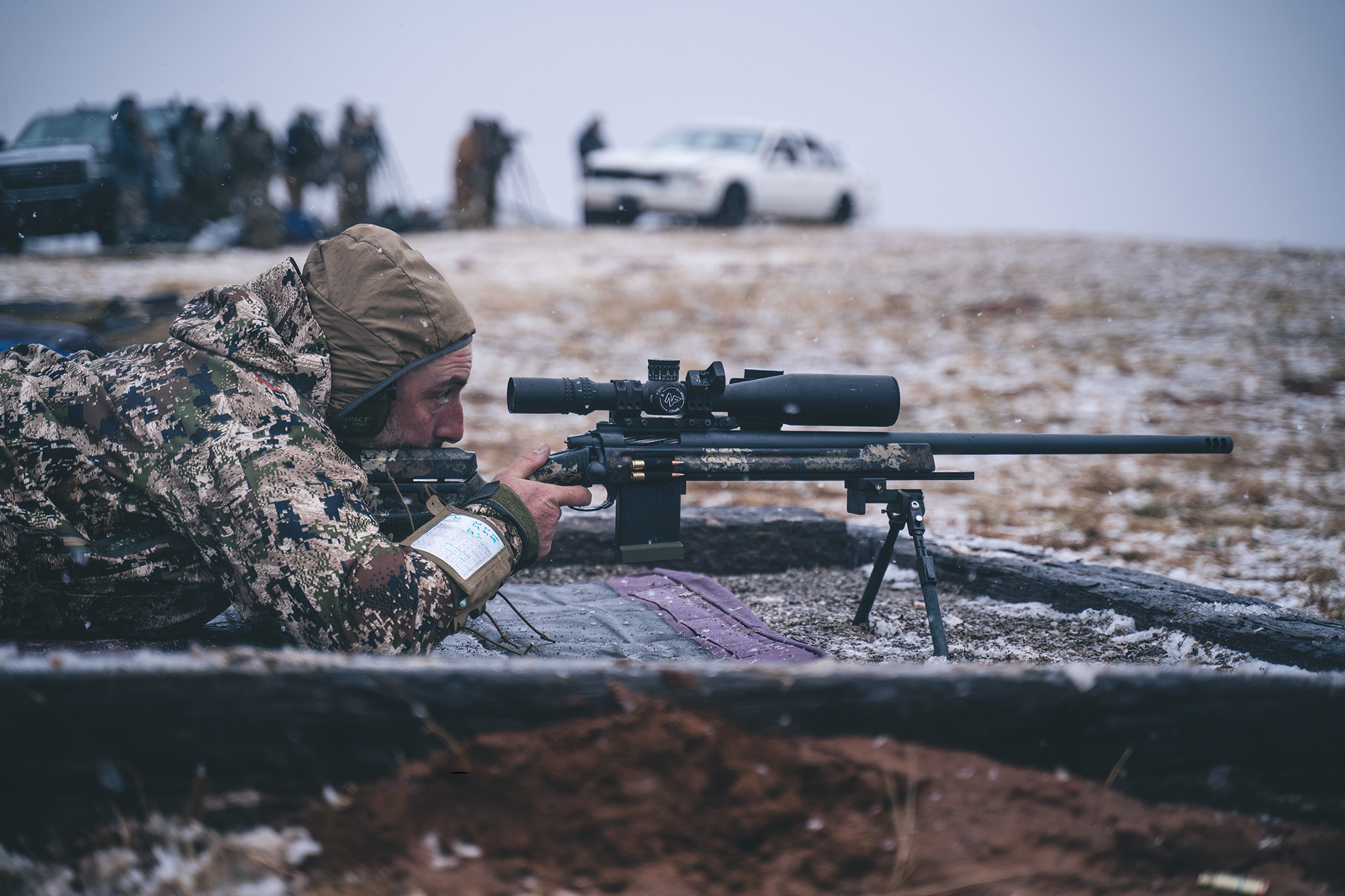
I hustled back to the confirmation range and got the rifle back on target and finished the match strong. At the end of the Finale, I ended up right in the middle of the pack—a gentleman’s C of a performance.
In light of the level of the competition, and my self-inflicted error, I was pretty happy with that showing. It felt fitting in a way. Between ripping off my door handle and dumping my rifle, the trip was bookend by two knuckleheaded moves. I thought about that a fair bit during the long two-day trip home. I also spent time cooking up some dry-fire drills to practice in my garage this winter—because I’m definitely planning on shooting the PRS Finale again next year.
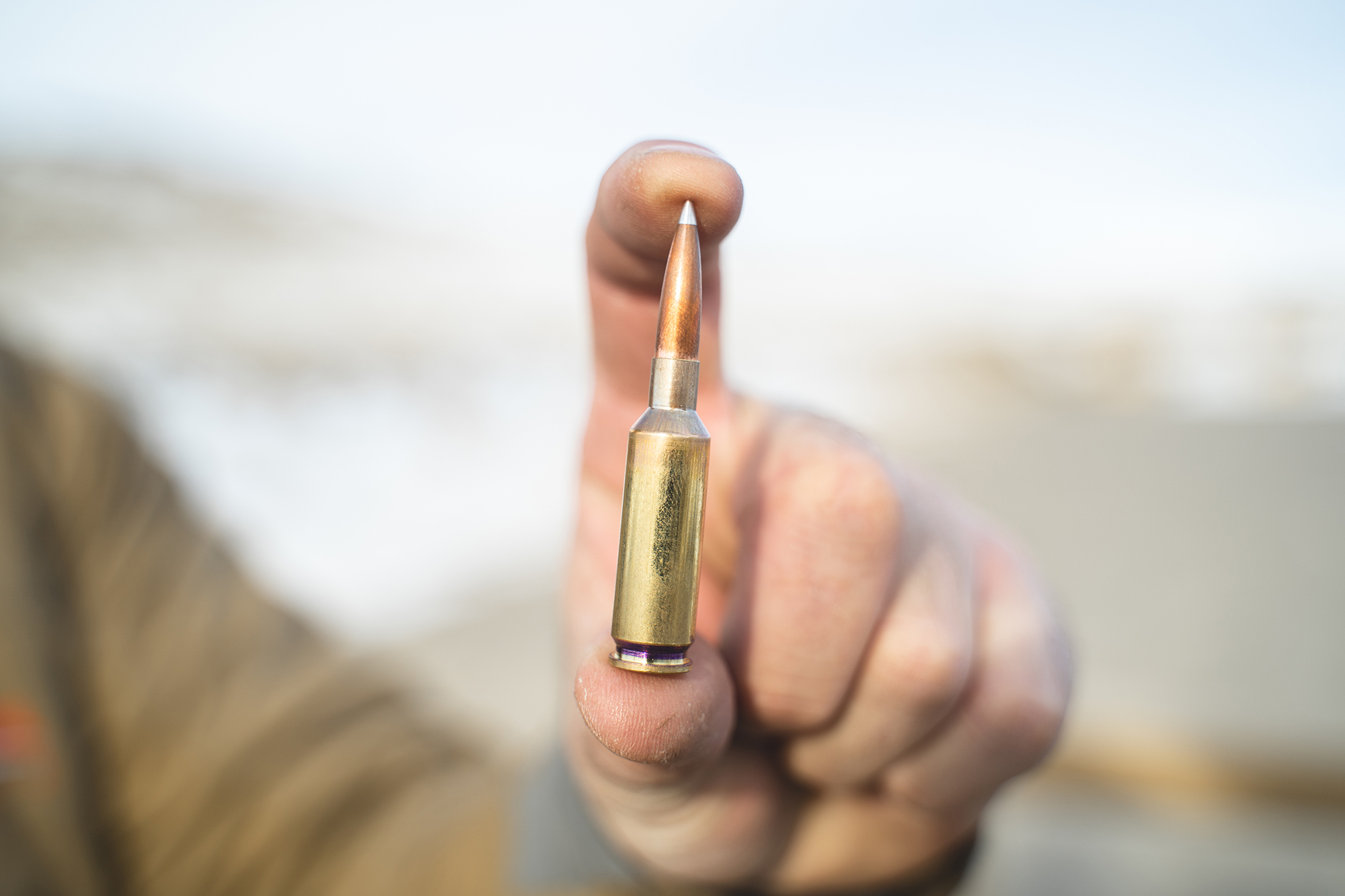
The 6 GT Arrives
Last season I opted to shoot the new 6mm GAP GT, a mild 6mm round that was designed from the ground up to excel in PRS and similar matches. The goal of the two men who created it—Tom Jacobs, the maker of the highly-sought-after Vapor Trail bullets, and George Gardner, the head honcho at GA Precision—was to combine the best attributes of the current crop of top PRS cartridges into a single package.
In particular, they wanted to develop a case that would be as consistent and accurate as the short and stubby 6mm benchrest rounds that have gained so much popularity over the last couple years, yet feed as well from unmodified AW and AICS magazines as the 6mm Creedmoor and other longer cases.
After doing my own load development and comparing notes with dozens of other 6 GT shooters over the last year, a couple things became clear.
First, the round is very easy to load and get good results from. When looking back over all the combos of bullets, brass and powder that I used, I can honestly say that none of them shot poorly, and many were exceptional.
I used brass from both Hornady and Alpha Munitions, both of which worked well, though the Alpha Munitions brass—especially their new OCD series—is outstanding. The cases are not only consistent to the point where I don’t even bother sorting them, but the grain structure of the brass is extremely hard, leading to excellent case life.
When it comes to bullets, we have an embarrassing number of fine 6mm projectiles to pick from. For all my major matches I shot the 110-grain A-Tips from Hornady, but also had good success with their 108-grain ELD-M bullet, which is less expensive yet still quite good.
Of course, it pays to experiment with your own rifle, and I’d strongly suggest trying some of Tom Jacob’s 103-grain Vapor Trail bullets too. He is one of the finest long-range benchrest shooters in the world, after all, so it isn’t surprising that his bullets deliver next-level performance in the 6 GT.
Read Next: This Rifle Training Program Will Make You a Better Shooter in 200 Rounds
How to Get Started in PRS
It’s easy to look at the rifles and gear that the pros are running and feel overwhelmed at the prospect of participating in a PRS match. But don’t let that stop you. If you’re interested in trying the sport there are several ways to go about it.
If you want to run your own kit, here’s what you’ll need to get going. A rifle that is fed from detachable box magazines that has a barrel that’s stout enough to handle being shot 10 times in rapid succession without losing it’s point of aim is essential. If possible, you’ll want to shoot a mild cartridge, and two of the best that have good factory ammo available are the 6.5 Creedmoor and 6mm Creedmoor. But you can also run a .308 if you have a heavy-barred tactical rifle lying about, or even a .223 with a fast twist (1:7) barrel and heavy-for-caliber (70 grains and up) ammunition.
As for a scope, something that can magnify up to 15X with a reticle that has reference marks for holding over for elevation, and, ideally, wind holds too is a good place to start. An exposed target-style elevation turret is useful for this kind of shooting, and a first-focal plane scope is a big benefit, but not essential.
The PRS has a dedicated production class that puts limits on the cost of the equipment in an effort to help level the playing field. And new this year is PRS’s rimfire series, which is already growing rapidly, according the Shannon Kay, who runs the PRS.
“I wouldn’t be surprised if in the next 12 to 18 months if the rimfire series is larger than the centerfire series,” Kay said. “Part of it is that it is more affordable, for sure, but there are also a lot more places that can host a rimfire match than centerfire matches. Having a rimfire option also really opens up the sport to younger shooters.”
Even if you don’t have any PRS gear, you can still probably shoot a match. PRS shooters are a generous bunch and, in my experience, are always willing to help out new shooters. Get in touch with the folks who run matches in your area, and there’s a very good chance that someone will let you borrow their gear to test the waters.
“From the outside looking in the sport can be intimidating. But 99 percent of our experienced members will go out of their way to encourage someone who’s new,” Kay said. “They remember when they were in that position themselves—and it wasn’t usually that long ago for them either. The feeling of the community is that we’re all in this together and you won’t find nicer people anywhere.”
